J. R. Rix's ship MV Magrix (subsequently MV Ashleigh),
on which Alex's brother Leslie was Master at the time.
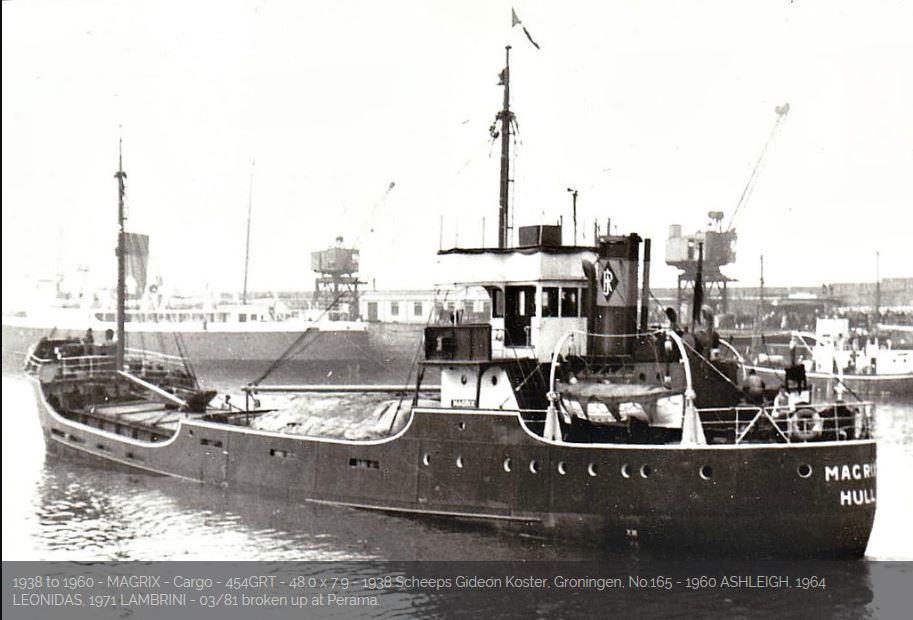
Magrix ship registry listings
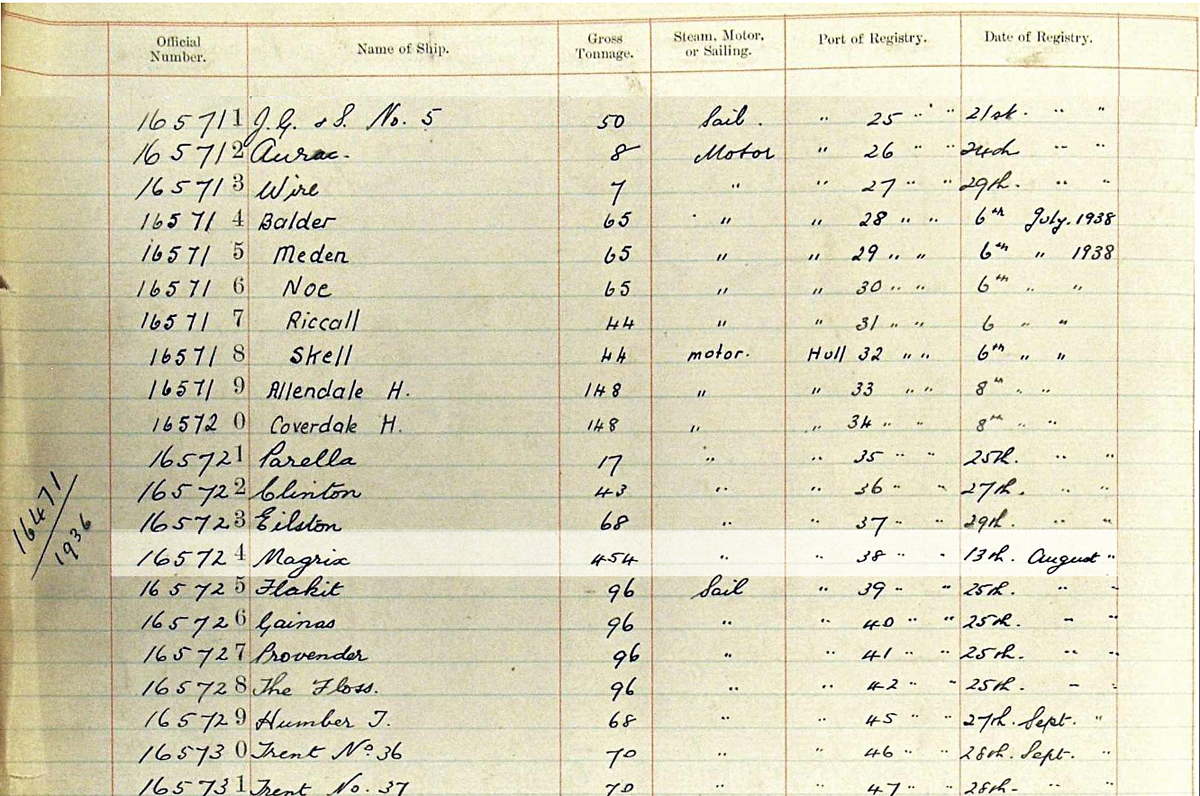
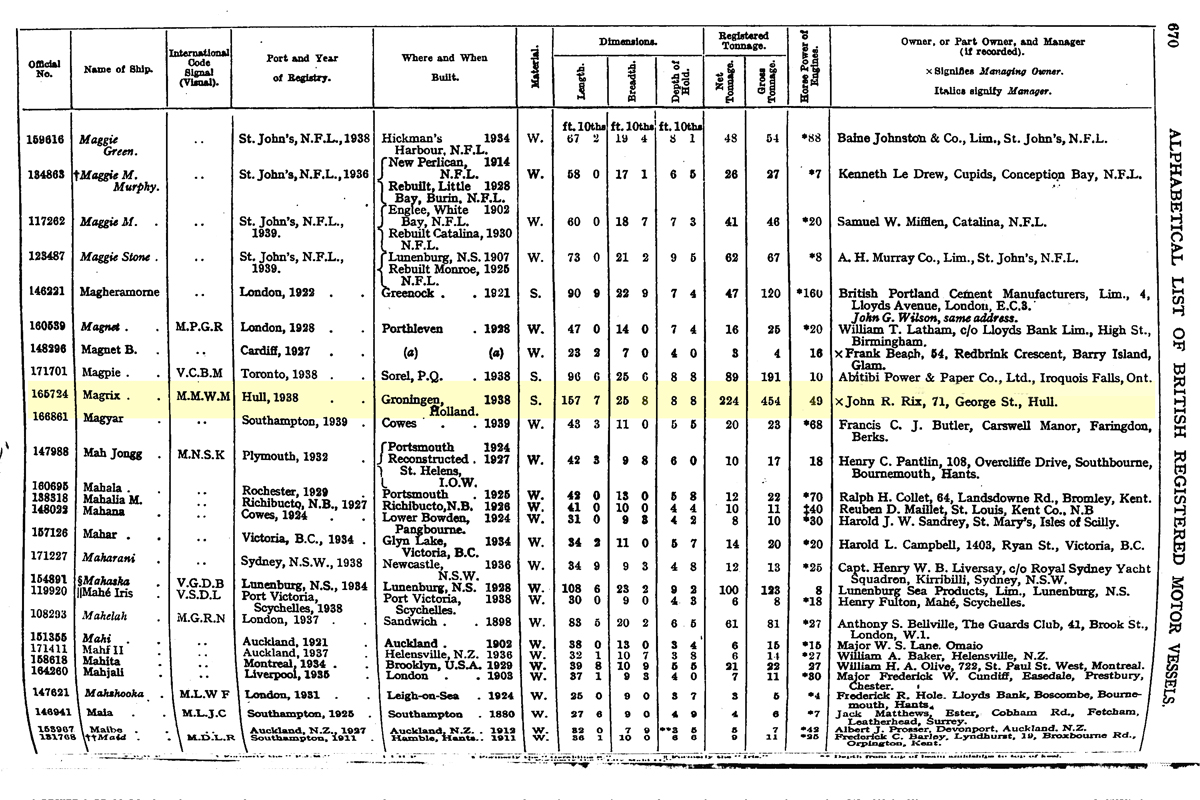
MV Magrix with list after loading limestone tipped from waggons at Whitby in 1959.
In 1958 Rix Shipping Ltd began carrying agricultural limestone from Whitby to North Eastern Scottish ports. Magrix was the first ship to load in Whitby and with no dockside cranes, the only way to load was by tipping stone into the hold directly from the waggons. When Leslie, as the ship's captain, came back from dealing with the harbour master, the First Mate was in a spot of bother as he hadn't properly supervised the loading. Leslie had to turn the ship round in the harbour basin at high tide (despite the list), so that it could be loaded from the other side - to balance out the list. Tricky manoeuvre, but quite exciting for the writer, who was only 13 years old at the time and on board for the school holidays as a 'supernumerary' crew member. With the ship's list it was a bit difficult too to get across the deck to go ashore.
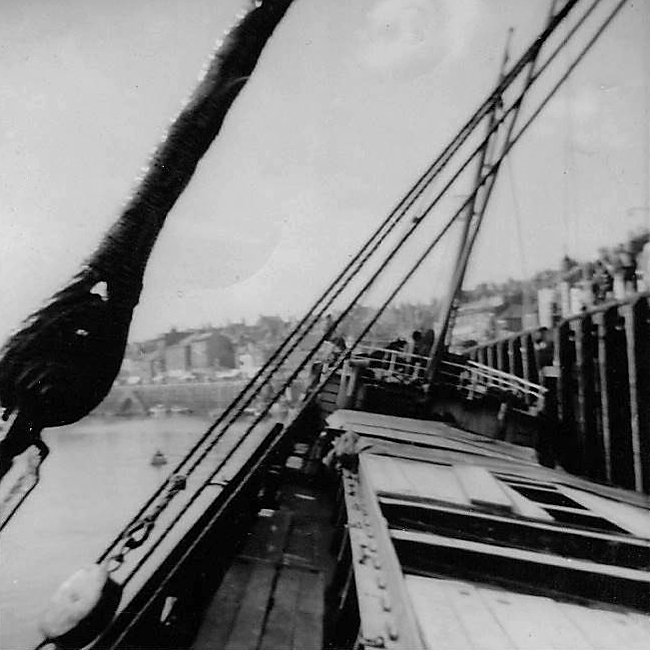
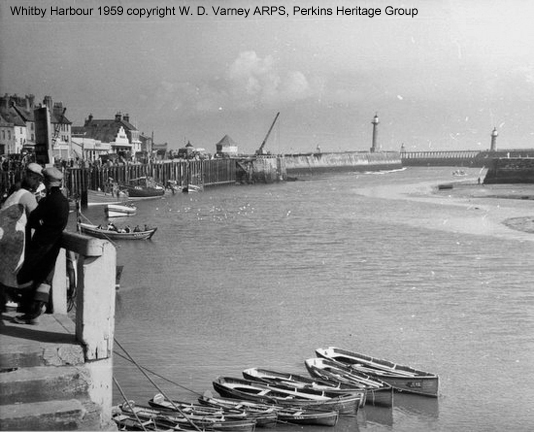
Sinking of MV Acclivity and rescue of crew by MV Magrix, 20th January 1952
The weather was calm, the sea flat and the Acclivity, a small motor tanker, was pursuing her voyage from Thames Haven to Newburgh, Fife with a cargo described by the owners, F.T. Everard and Sons Ltd, as ‘linseed oil’, though the official wreck report confusingly states both ‘linseed oil’ and ‘petroleum in bulk’ as the cargo.
Disaster struck in the dark just after midnight off the Farne Islands, Northumberland. Beneath the surface, out of sight of the crew on watch, the ship had hit a submerged object and was badly damaged. Starting to take in water, the ship’s master sent out a ‘Mayday’ distress call, which was received by the coastguard at Cullercoates at 1206 GMT.
The Magrix was in the area and made straight for the now drifting and helpless Acclivity. At 0105 GMT Magrix radioed, ‘Have taken crew of motor tanker Acclivity on board. Am standing by ship, which is sinking in position Longstone bearing N ½ W, approximately 7 miles, Inner Farne Light, NW by N ½ N’.
Both ships and crews waited for assistance to salvage the sinking ship. In response, the tug Hendon set off from Tyne docks at 0610 GMT. The weather at the time was reported as fine with a light westerly breeze, clear visibility and a moderate sea.
Realising assistance might not arrive in time, the two ships’ masters agreed to try and tow the Acclivity to shore. Cullercoates coastguard received a radio message from the Magrix at 0712 GMT, ‘Have picked up motor tanker Acclivity and trying to tow her to Tyne, but don’t think she will last long’.
This proved to be the case as the ship had become too heavy after taking in more and more water and at 0859 GMT the coastgard received another message from the Magrix, ‘Had Acclivity in tow for about one hour, but tow rope broke and ship sank approximately five miles east by south of Dunstanburgh Castle, We dropped a can buoy two cables SSE of wreck’.
The Magrix put into Amble later in the morning and safely landed the crew of nine.
At the time Alex's brother (my father) Leslie Grimes was first mate on the Magrix and the ship was owned by a then new Rix company, J.R. Rix and Sons Ltd.
J.R. Rix company background
J.R. Rix & Sons started life in January 1947 with a working capital of £7,000 and one motor ship, the Magrix, in offices in the Bank of England Chambers, Whitefriargate, Hull.
Rix Shipping was formed on 23 March 1950, making it is the oldest company in the J.R. Rix & Sons Ltd group, however it did not become a limited company until 14 February 1957. After starting out with the single ship, Magrix , the company soon acquired two further vessels: Roxton, from Middlesbrough owners, and a ship bought from Swedish owners which the company renamed as the Jarrix.
In the early 60's Rix Limes Ltd was formed to supply lime to the Scottish agricultural market through an extensive network of inland depots serviced by road and rail from Montrose where it was imported on Rix dry cargo ships. This lime was sourced from Humber quarries and transported by rail to Hull docks for forwarding to Montrose where it was discharged by J. M. Piggins Ltd, later to become Piggins Rix Ltd, the Rix Group’s first owned interest in Scotland. A short time later Rix Petroleum established a fuel depot there to serve the offshore industry and its growing domestic, agricultural and haulage customers.
Rix Shipping Ltd established regular voyages for coal from Amble, Blyth and Goole for Teignmouth, Exmouth, Hayle, Penryn, Falmouth and Penzance, with back cargoes of china clay and stone chippings. Another regular cargo was sulphate of ammonia from the Tyne or Tees bound for Ipswich and Avonmouth and in 1958 Rix Shipping Ltd began carrying agricultural limestone from Whitby to North Eastern Scottish ports as well as chalk, mined from Little Weighton in the East Riding of Yorkshire, from Hull.
Over the years the company continued to expand its fleet by both buying ships and commissioning new vessels to be built until by the early sixties it had four motor ships all under five years old. This enabled the business to trade with near continental ports as well as those in the Baltic and Bay of Biscay. Regular return cargoes included seasonal crops, including French onion sellers who, complete with bikes, were carried in the ship's hold with the onions.
Source: J.R. Rix & Sons Ltd - Wikipedia
Other members of the Rix family included Brian Norman Roger Rix (Baron Rix), actor, Chairman of Mencap, and ceaseless campaigner for people with learning disabilities, and his older sister Sheila Mercier (née Rix), who starred as Annie Sugden in Emmerdale Farm, the television soap opera about farming folk in the Yorkshire Dales.